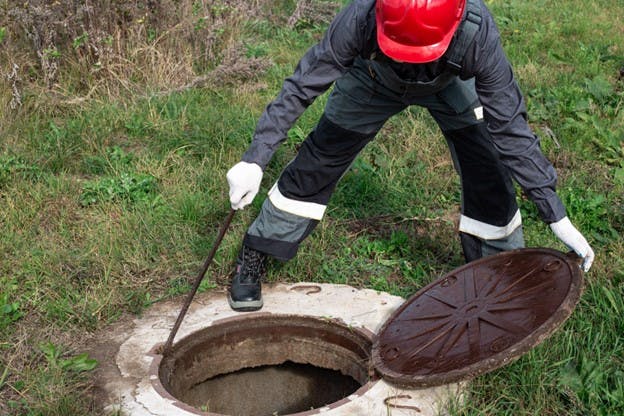July 2023
How to Test Your Tap Water and Why You’d Want To
Sometimes you can look at water and just know you should not drink it. It might be dirty or smelly or cloudy. Other times, water can look and smell clean and pure but could contain microscopic pathogens or dangerous chemicals you wouldn’t choose to drink. Just because we can’t see, smell, or taste something doesn’t mean it can’t cause problems.
That’s not to say all common contaminants cause health problems. In fact, because water is such an effective solvent, 100% pure water doesn’t exist. There is always some amount of impurity in your water and that’s OK.
Some of these impurities are harmless but could alter the taste and odor of your water. Others could lead to health problems if consumed over a long period of time. Some could be cause for more immediate concern. The only way you’re going to know for sure is to test your water and find out.
In this article, we’re going to show you how to test your tap water and tell you what you should be testing it for based on your personal situation.
How Do I Know My Tap Water Is Safe to Drink?
The only way to know for sure if your tap water is safe to drink is to test it with a certified laboratory. While DIY home tests are cheaply available, they are best left for pools and not for your drinking water. They can only test for a few parameters and even then, not accurately enough for important health risks like lead or arsenic or PFAS. What works for your swimming pool simply won’t work for your tap water.
Your concerns could differ based on whether your home is connected to a public water system (meaning you pay a water bill) or a private well. In fact, if you’re connected to a public municipal water source, you already have access to some of the answers you're looking for.
In the United States, all public water suppliers must monitor the water they supply to customers and hold it to a certain standard of quality. The standard is based on rules created by the U.S. Environmental Protection Agency, who puts a cap on the levels of about 90 contaminants while offering guidance on many more contaminants.
The health departments in each state can apply additional safety standards to drinking water suppliers but cannot lower the minimum water standards of the U.S. EPA. This means that legally there is a limit on at least 90 different contaminants if you have city water.
These standards not only must be met, but aggregate and averaged test results must be reported once per year in a consumer confidence report (CCR). It is often also called a water quality report. If you have public water, this is the fastest way to get a snapshot of your water quality and see if there were any violations over the last year. You can look up your water provider’s latest CCR, here.
Some municipalities perform water quality testing hundreds of times per day in the treatment plant to ensure they stay under legal limits of regulated contaminants. Staying under these limits is supposed to indicate safe drinking water, but there are several reasons why even water that meets legal requirements could pose health risks. We’ll take a look at some of these later in this article. First let’s look at well water.
Who Protects Your Well Water?
While homeowners with private wells have a right to protect their water through the court systems, well water is not regulated by anyone. It has also not been tested, filtered, or treated by anyone. If you have a well that's pulling up groundwater from the earth, it's up to you to make sure it's clean and safe to drink. You’re also responsible for protecting it against polluters.
One of the best ways to ensure your water is safe and protect your precious water supply legally is to test often and keep records. The more regular records you have of your water quality and contaminant levels, the easier it is to prove to a judge if someone does something careless that damages your water supply.
Many households with wells believe that because they are pulling up water locally, they are protected against outside polluters. However, the underground aquifers that private wells are drilled into can extend for a huge distance around the home. A chemical spill or pesticide use on a farm miles away from your home could affect your drinking water quality. And since many well water systems are built in more rural areas, it's not uncommon for factory and agricultural activity to be prevalent.
This all means if you have well water, it's very important to learn how to test your tap water and treat it if necessary.
How Can I Test My Water at Home?
There are many test kits you can buy online or at your local hardware store to evaluate a water sample. They are usually categorized by what contaminants they test for and the testing methods they use. These will have varying degrees of accuracy with some showing ranges instead of accurate results. Some of the common types of home test kits are:
- Test strips: While many options exist, test strips are best for general parameters but not for contaminant testing. Test strips are good for pool water testing but not for drinking water.
- Powder tests for bacteria: These tests are more limited in what they look for, but their narrow scope can make them more accurate. They work by placing a small amount of water in a jar of powder and observing the color change in the powder.
- TDS readers: This method tests for the total dissolved solids in your water. These electronic devices give you a read of the quantity of dissolved material in your water but don’t tell you a lot about the contaminants in your water. A high reading could indicate water quality problems, but not necessarily.
While there are many home water test kits available on the market, accuracy is not a guarantee. If you have any real concerns or you are a well owner, your best course of action is to test your tap water through a certified lab.
How to Test Your Tap Water Through a Certified Lab
Figuring out how to test your tap water accurately comes down to finding the right lab for your needs. Laboratory certifications can be very complex as there are more than 2 million certified fields of accreditation among the 2500+ US environmental labs. The EPA database is one resource for reviewing lab certifications but typically your State’s own database is more up to date and accurate.
Mail-in laboratory test kits, like Tap Score, ensure your tests are performed by laboratories with ISO, State, NELAC or other equivalent certifications. Tap Score has also identified the most common issues in drinking water and simplified the sampling process with their core kits. These are arranged by water source (city, well, spring and rainwater) and make it easy to lab test your water.
What Common Contaminants Should You Be Testing Water For?
Water can contain thousands of different water contaminants and you may need to tell a lab what you are interested in checking.
If you have a municipal water supply, you’ll want to take a look at your city's most recent Consumer Confidence Report (CCR) and see if there’s anything worrying. You can find that either through your water company’s website or search for it on EPA.gov.
When looking at the CCR, consider what can change in your water between the water treatment plant and your faucet:
- Bacteria, algae, and other microorganisms can grow and proliferate
- Chlorine and chloramine concentrations can change
- Disinfection byproducts can form
- Rust and sediment in the pipes can be disturbed and picked up
- Lead from your home’s plumbing and service lines can leach into your water
Most municipalities only test for what is required by their local authority. Some will test for over 200 but there are thousands of contaminants out there that are potentially in your water.
Many contaminants are not regulated by the EPA, so many municipalities don’t even try to detect them, like microplastics. If you have a specific concern that is not a regulated or measured contaminant by your water company, you may need to find a lab that can test for it.
If you have well water, the EPA recommends that you test your water annually for total coliform bacteria, nitrates, arsenic, uranium, total dissolved solids, and pH levels. You should also test immediately when you have changes in your environment or health. For instance, if you have recurring gastro-intestinal problems, testing your water for coliform bacteria may give you an answer. If you have new agricultural activity, it's recommended to test for nitrates, nitrites, and pesticides.
Check out this list of potential contaminants well owners should test for situationally.
You should also keep up to date with the chemical makeup of your water by consulting experts regularly.
Is It Safe to Drink Rainwater?
Rainwater is generally not considered safe to drink, but it depends on your circumstances. If there is a lot of pollution in the air, rainwater can pick it up as it falls through the atmosphere. This means rainwater could contain chemicals and heavy metals.
It could also be contaminated by your collection method. Gutters can have animal droppings, for instance. If you use rainwater to supply your home with drinking water, it’s recommended that you run it through a high-quality water filter first.
Should You Filter Tap Water?
Whether you rely on a public water system, a private well, or rainwater collection, filtering your water can help give you the cleanest water possible. A high-quality, NSF International, or WQA, certified filter like HomeWater’s 4-Stage Reverse Osmosis Under Counter Water Filter could reduce contaminants you may not even know to test for. Home water filters are an extra layer of defense for those with municipal water and a must-have for private well owners.
Testing Your Tap Water Gives You Peace of Mind
Learning how to test your tap water can help you make sure you have safe drinking water for you and your family. There are many methods of testing available, but an EPA-recommended certified lab will give you results you can trust. Once you know what’s in your water, you will be better equipped to filter it out.
At HomeWater, we take water quality seriously. We make affordable, high-quality, NSF/ANSI certified water filters that give you the purest and best-tasting water imaginable. All our water filters and water softeners are made in America and intelligently designed for maximum effectiveness without decreasing your water flow. Discovering the perfect water filter for you is as easy as taking a quick quiz.
Our patented UPSTREAM 4-Stage Whole Home Water Filter uses a blend of red flint, KDF55, and catalytic carbon to deliver superior filter performance. It filters particulates, heavy metals, chlorine, VOCs, PFOS/PFAS, and more! Add on a HomeWater salt-free water conditioner to rid your pipes and surfaces of limescale and hard water stains.
You can easily taste the difference a HomeWater filter makes.



